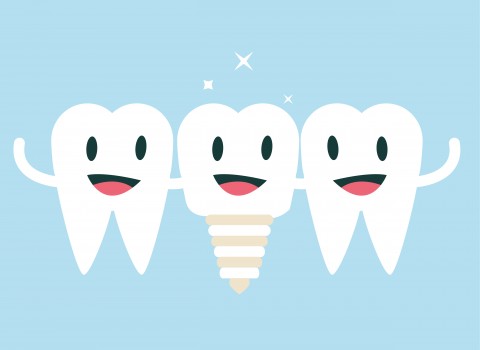A New Dental Implant Could Kill Germs, Fight Infections
 For patients who have lost teeth due to oral infections like periodontitis, a new spin on dental implants could help prevent similar infections from occurring in the future. Researchers at Katholieke Universiteit Leuven (KU Leuven) in Belgium have developed a dental implant with a built-in reservoir that can be filled with antimicrobial drugs to fight or prevent oral infection. We spoke to Dr. Gary Lederman of Bellmore, NY about this exciting new dental technology.
For patients who have lost teeth due to oral infections like periodontitis, a new spin on dental implants could help prevent similar infections from occurring in the future. Researchers at Katholieke Universiteit Leuven (KU Leuven) in Belgium have developed a dental implant with a built-in reservoir that can be filled with antimicrobial drugs to fight or prevent oral infection. We spoke to Dr. Gary Lederman of Bellmore, NY about this exciting new dental technology.
Dental implants are a permanent dental device that mimics the look of natural teeth- eliminating the need for temporary fixes like partials, bridges, and dentures. Though crude dental implants made of bamboo, seashells, and rocks, have been found in skeletons dating as far back as 4000 years ago, modern dental implants have only been around since the mid-1960’s. Today’s implants are a far cry from their ancient predecessors- and are currently comprised of three major parts: a titanium screw that is fused into the jaw, a post, and on top of that post, a porcelain crown. To ‘install’ the implant, the post and crown are inserted into the screw, and all that is visible to the naked eye is the crown.
The new implant developed at KU Leuven, however, has some striking differences. "The major difference lies in the post which the crown attaches to," explains Dr. Lederman "Instead of a plain metal post, the KU Leuven post actually contains a reservoir, which sits under the crown. This design allows for the dentist to fill the reservoir with an antiseptic fluid, such as chlorhexidine, which is the active disinfecting ingredient in mouthwash."
Another difference between the KU Leuven implant and traditional implants is that the crown itself is made of a porous material, which allows passage of the fluid in the post to be slowly dispensed into the mouth throughout the day. "This could potentially be used for anything from medications that fight illnesses such as periodontitis, to preventing new infections or other oral health problems. It could also be used for fluids like mouthwashes, to prevent bad breath," explains Dr. Lederman. What makes this especially unique is that the fluid can go from the inside to the outside- but not the other way around. Says Dr. Lederman, "This is important, because if things like food, saliva, and bacteria were able to become trapped inside the implant, it could actually be very dangerous, and could potentially increase the patient’s risk of infection- instead of preventing it."
The reservoir in the implant is supposedly accessible by removing the crown itself. From there the dentist can simply refill it with whatever fluid is needed, or with an entirely different fluid, if necessary. "Patients probably could refill it at home if they tried," explains Dr. Lederman, "However the intention is to have the dentist do it in the office. That way they can measure the proper amount of medication without wasting or overmedicating the patient, and make sure they don’t damage the crown removing or replacing it."
Though this new implant is not yet available to consumers, Dr. Lederman hopes it will be available within the next few years. Human trials look promising, but researchers are looking for more funding to perfect the design. "Nobody hopes to need dental implants someday," says Dr. Lederman, "But for those who do end up needing them, this technology has the potential to be life-changing."



